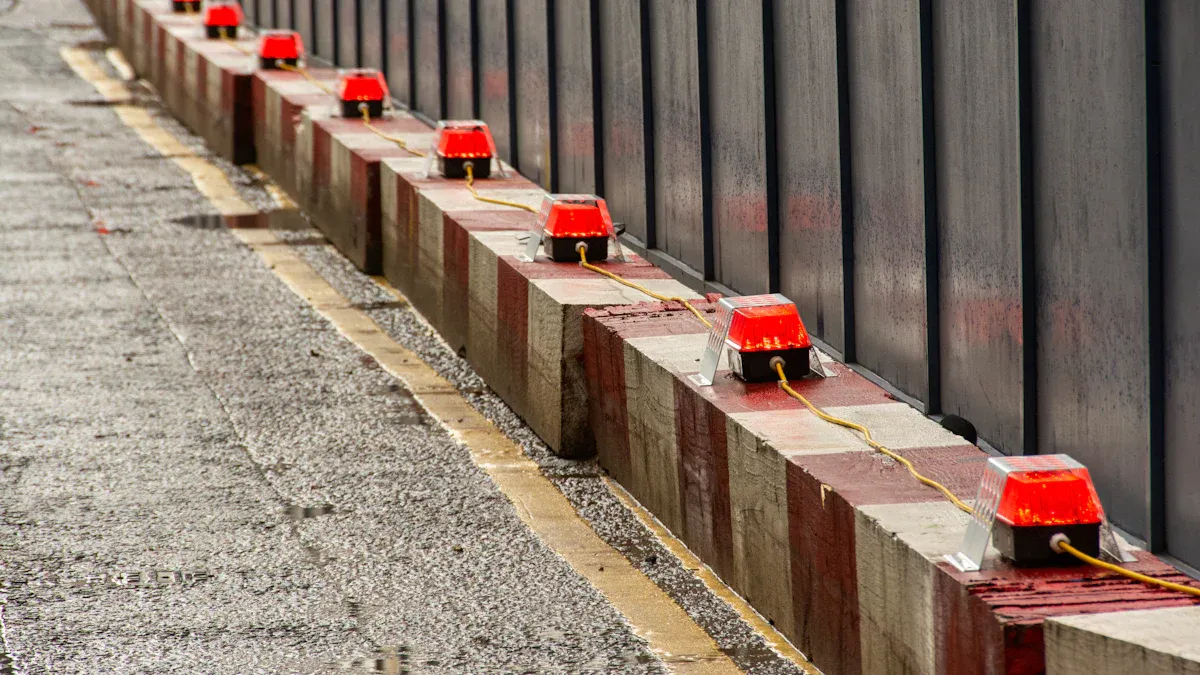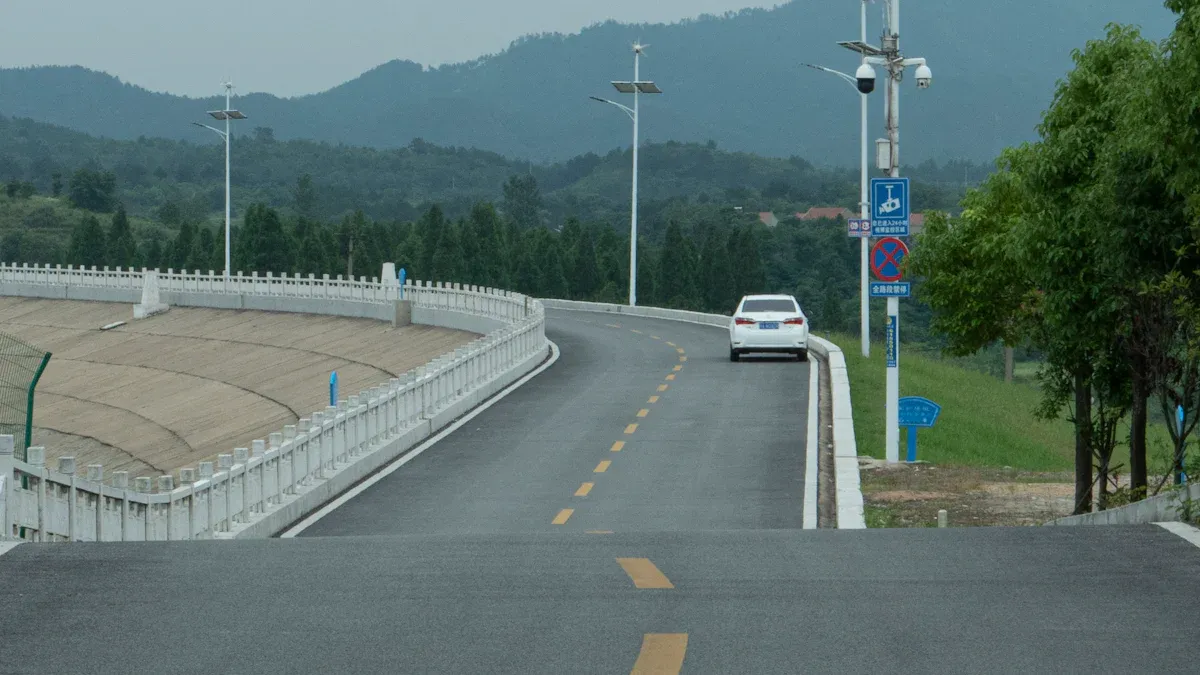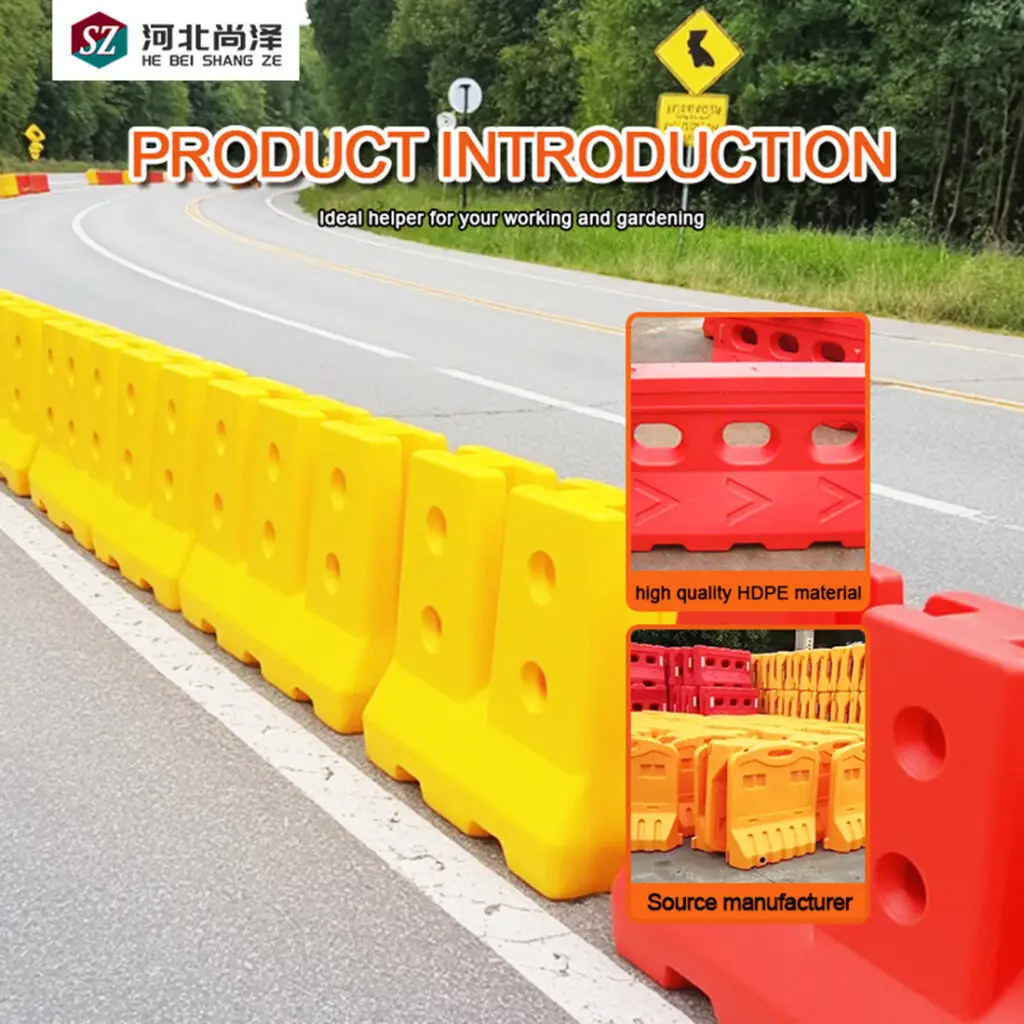The Importance of Safety Traffic Barriers in Transportation

You see safety traffic barriers every day, but you may not know how much they help you. Every year, about 1.19 million people die in road crashes. These crashes are the main reason children and young adults aged 5–29 die. The cost of these injuries is $3.6 trillion each year. Barriers help make roads safer by lowering the chance of bad accidents. When you drive, walk, or bike near traffic, these barriers keep you away from danger.
Key Takeaways
- Safety traffic barriers help lower the chance of accidents on roads. They protect drivers, passengers, and people walking nearby. Different types of barriers, like concrete, guardrails, and cable systems, have special jobs to make roads safer. Barriers stop crashes and also make accidents less serious. This helps keep everyone safer on the road. Putting barriers in the right places, like construction zones and busy intersections, is very important for safety. Helping to put up and take care of safety barriers makes travel safer for everyone using the road.
You can spot road safety barriers on highways and busy streets. These barriers help stop accidents from happening. When you drive, barriers keep your car in the right lane. They also stop cars from going off the road and hitting things. There are different kinds of barriers, like concrete medians, steel guardrails, and cable systems. Each type helps keep people safe on the road.
- Median barriers can cut crash rates by up to 70%.
- They keep cars from crashing head-on into each other.
- Good medians make crashes less serious and help people walk safely.
Barriers use smart ways to protect you. The table below explains how these systems work:
| Mechanism | Description |
|---|---|
| Crash Conversion | Barriers turn bad crashes into less dangerous ones. |
| Types of Barriers | Median concrete barriers, W-beam steel guardrails, and high-tension cable barriers. |
| Design Considerations | Barriers can push cars back onto the road, which changes crash chances. |
Some barriers are taller or shaped differently. Box beam barriers that are 27-29 inches high cause fewer bad crashes. W-beam and box beam barriers with posts 6.1 to 6.3 inches apart lower the chance of serious injuries. Flare traffic barriers have fewer crashes than straight ones. These details show that design matters for your safety.
Road safety barriers do more than just block cars. They help make your trip safer. In 2021, Germany had over 16,000 highway accidents with injuries. More than 4,800 accidents happened when cars left their lanes. Over 5,700 crashes involved road safety barriers. These numbers show barriers help stop bad accidents.
Barriers are important in work zones too. About 60% of highway workers saw work zone crashes last year. These crashes caused delays and hurt people. Thirteen percent of companies lost workers, and 61% saw the public get hurt in work zones. A physical barrier is one of the best ways to keep workers safe. Using strong barriers helps stop deaths and injuries.
Tip: If you walk near busy roads, remember this. At 30 mph, a pedestrian has a 45% chance of dying if hit. At 40 mph, the risk goes up to 85%. Road safety barriers help by keeping cars away from sidewalks and crosswalks.
Barriers also help on roads without rumble strips. Roads without these strips have more barrier crashes. This shows we need strong road safety barriers everywhere.
Road safety barriers help you by:
- Cutting down on bad accidents.
- Keeping drivers, passengers, and walkers safe.
- Lowering the risk of head-on and run-off-road crashes.
- Making work zones and building areas safer for all.
When you see safety traffic barriers, you know they help stop accidents. These barriers work quietly to help you and others get home safely.
Types of Road Safety Barriers
You see different road safety barriers every day. Each one has a job to help keep you safe. If you know the differences, you can see how they work on roads, bridges, and in work zones.
There are four main types of road safety barriers: concrete barriers, guardrails, cable barriers, and temporary barriers. Each one keeps you safe in its own way.
Concrete Barriers
Concrete barriers are strong and do not move. You often see them in the middle of highways or at construction sites. They are made from reinforced concrete and are about 32 to 42 inches tall. Their wide base and sloped sides help them stay put during crashes. Jersey barriers are a common kind. They stop cars from crossing into traffic going the other way. They also soak up some crash energy to protect people inside cars. Concrete barriers last a long time and work well in bad weather.
- Heavy and solid, built to take big hits
- Used to split traffic lanes and protect work zones
- Help stop cars from crossing the median
Guardrails
Guardrails use metal rails and posts to guide cars back onto the road. These barriers bend and take in energy when a car hits them. This gives a smoother stop instead of a hard crash. Guardrails cost less than concrete barriers. They work well on roads with curves or hills. They help keep cars from going off the road or down steep slopes.
| Advantage | Description |
|---|---|
| Gentler redirection | Guardrails let cars slide along the barrier, lowering crash force. |
| Flexibility | Metal rails bend to take in energy, making crashes less bad. |
| Cost-effective | Cheaper to put in than concrete barriers. |
Cable Barriers
Cable barriers use strong steel cables held up by posts. When a car hits them, the cables bend and take in the hit. This helps stop cars from crossing the median and lowers the chance of deadly crashes. Since 2009, many roads have added cable barriers to keep cars out of oncoming lanes. These barriers soften the crash and save lives.
Temporary Barriers
Temporary barriers help keep you safe in places that change a lot, like construction zones or event areas. Workers use these barriers to guide cars, protect workers, and warn drivers about dangers. You might see them made of plastic or metal. They are easy to move and set up fast.
| Situation | Purpose of Temporary Barriers | Effectiveness in Accident Prevention |
|---|---|---|
| Construction Sites | Mark work areas and warn drivers | Keep workers and visitors safe |
| Event Venues | Control crowds and manage entry spots | Direct people safely |
| Roadwork Zones | Guide cars and protect workers | Lower accident risk by warning drivers |
You can see that each type of road safety barrier has a special use. Some barriers stay in one place for years. Others move when needed. All these barriers work together to keep everyone safe on the road.
You see road safety barriers almost every day. You may not know how much they help with traffic. These barriers guide cars and keep them in the right lanes. When you drive in a construction zone, barriers show you where to go. They also protect workers at the same time. Clear signs from barriers help drivers know what to do. This makes traffic move better and keeps people safe. Adding more lanes or roundabouts can help traffic too. Barriers are important for these changes. They stop cars from going into unsafe places. Barriers help everyone follow the rules. This means roads are safer and less crowded because barriers keep cars in order.
- Barriers help cars go safely around work zones.
- They stop traffic jams by keeping cars in line.
- Barriers protect workers and help you in new road areas.
Road safety barriers do more than split up lanes. They help make crashes less bad and keep you safer. When a car hits a barrier, the barrier takes in some of the crash force. This lowers your chance of getting hurt. Studies show concrete median barriers can stop cross-median and head-on crashes. These barriers are a good way to stop accidents and save money. You get safer roads and fewer bad crashes when barriers are used.
| Benefit | Description |
|---|---|
| Prevent Accidents | Barriers stop cars from going into places for people walking. |
| Reduce Maintenance | Barriers protect roads, so repairs are needed less often. |
| Improve Traffic Flow | Barriers help emergency cars get to crashes faster. |
Barriers also keep people safe when they walk near busy roads. Road safety barriers make a strong line between cars and sidewalks. This helps stop accidents and keeps walkers safe. Chains, fences, and guardrails help people use crosswalks. Refuge islands give you a safe spot to wait when crossing big streets. Studies show barriers help people cross roads more safely.
| Evidence Description | Findings |
|---|---|
| Installation of barriers | 32% of people said barriers made them use crosswalks more. |
| Proposed devices | Chains, fences, and guardrails help and protect walkers. |
| Refuge islands | These help people use crosswalks and stay safe. |
You can see that road safety barriers have many good points. They help control traffic, make crashes less bad, and protect people walking. These barriers change to fit new road needs and keep everyone safe. When you think about safety, remember barriers help stop accidents and make streets safer.

Barriers are put in places where accidents happen a lot. These spots need more safety to protect people. Planners study how cars and people move in these areas. They look at walkways near traffic and places where cars might leave the road. The table below lists what experts check before adding safety barriers:
| Criteria for Safety Barrier Placement | Description |
|---|---|
| Planning vehicle and pedestrian routes | Makes sure cars and people move safely together. |
| Segregating pedestrians | Keeps people away from moving cars. |
| Working within one-way systems | Helps traffic move better and safer. |
| Using funnel systems | Moves cars away from risky spots. |
| Safety barriers for close walkways | Needed if walkways are less than 1 meter from cars and have no raised kerbs. |
| Appropriate width for walkways | Gives enough space for people to walk. |
| Accounting for deflection zones | Keeps people safe if barriers move. |
| Use of raised kerbs | Stops cars from going into walking areas. |
| Safe zones for vision adjustment | Helps people see better in different light. |
| Installation of barriers and bollards | Stops cars from hitting machines and workers, and helps people see. |
Barriers in these places help stop bad crashes. They make dangerous accidents less serious. Cable barriers on the far side of the road stop cars from crossing into traffic. Guardrails keep cars from leaving the road and help keep everyone safe.
Barriers are used in construction zones to keep workers and drivers safe. These barriers make a safe area for workers and protect tools and machines. When you drive in a work zone, barriers show you where to go. This helps stop confusion and lowers the chance of accidents. Barriers also warn you when you are near danger.
- Barricades show you where not to drive.
- Barriers stop cars from going into work areas and protect workers.
Good ways to use barriers in construction zones include using hazard controls, checking barriers often, and making sure everyone knows the safety rules. Some barriers work by themselves, like guardrails. Others need someone to move or control them.
Bridges and intersections need special safety barriers. These places are tricky because cars go fast and space is small. Barriers on bridges must be strong for today’s cars. Workers check old barriers and follow safety rules when putting in new ones. At intersections, barriers help guide cars and stop bad crashes. Barriers are put close to dangers to protect you if a car goes off the road.
Tip: Always watch for barriers on bridges and at intersections. They help keep you safe and stop accidents before they happen.
Barriers in these important places help stop accidents and make roads safer for everyone.
You help make roads safer when you support safety traffic barriers. When you see these barriers, think about how good setup and care stop accidents.
- Putting up safety barriers and impact absorbers the right way stops crashes.
- Barriers made and set up by today’s rules keep road users safe.
- Checking roadside shoulders and clear zones often helps manage safety well.
You will notice new ideas changing safety traffic barriers soon:
| Trend | Description |
|---|---|
| Smart Traffic Barriers | IoT sensors watch barriers and help fix problems fast. |
| Advanced Materials | Strong composites and recycled stuff last longer. |
| Modular and Adaptive Designs | Easy to put up and change for different traffic. |
| Energy-Absorbing Technologies | New ways help lower injury risks in crashes. |
| Eco-Friendly Manufacturing | Green methods and materials help the planet. |
Keep learning and support new safety changes. When you pay attention to safety, you help everyone travel safely.
FAQ
What is the main purpose of safety traffic barriers?
Safety traffic barriers help keep everyone safe. They stop cars, bikes, and people from getting hurt. Barriers keep vehicles from leaving the road. They also stop cars from going into oncoming traffic. This helps prevent bad accidents.
Where do you usually find safety traffic barriers?
You see barriers on highways and bridges. They are also in construction zones and busy intersections. Planners put them where crashes happen a lot. Barriers are also used where people walk close to traffic.
How do barriers protect pedestrians?
Barriers make a strong wall between cars and sidewalks. When you walk near busy roads, barriers keep you safer. They block cars from going into walking areas.
Can barriers be moved or changed for different needs?
Yes! Some barriers are easy to move and are temporary. Workers use these for roadwork or special events. Other barriers, like concrete ones, stay in one place for a long time.






